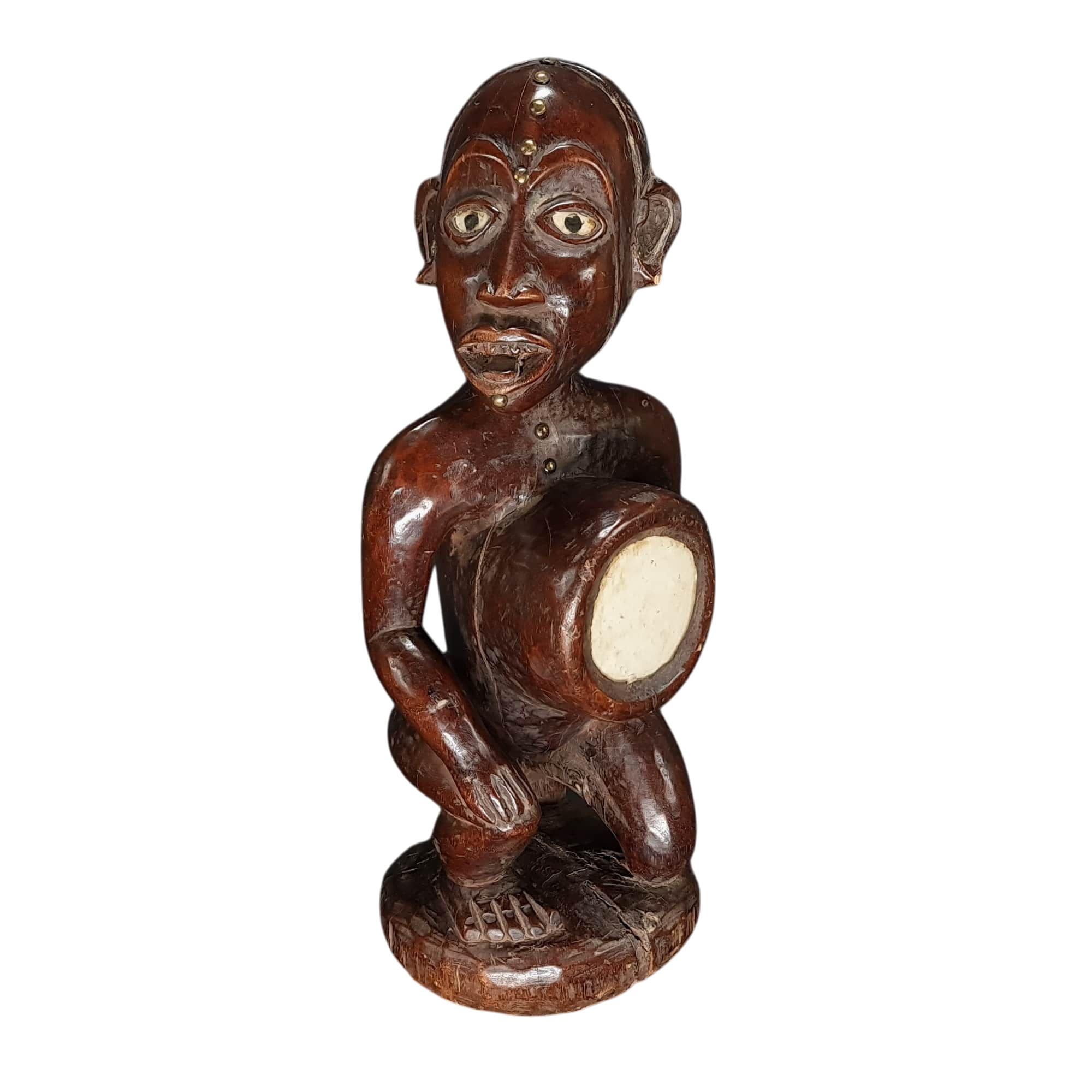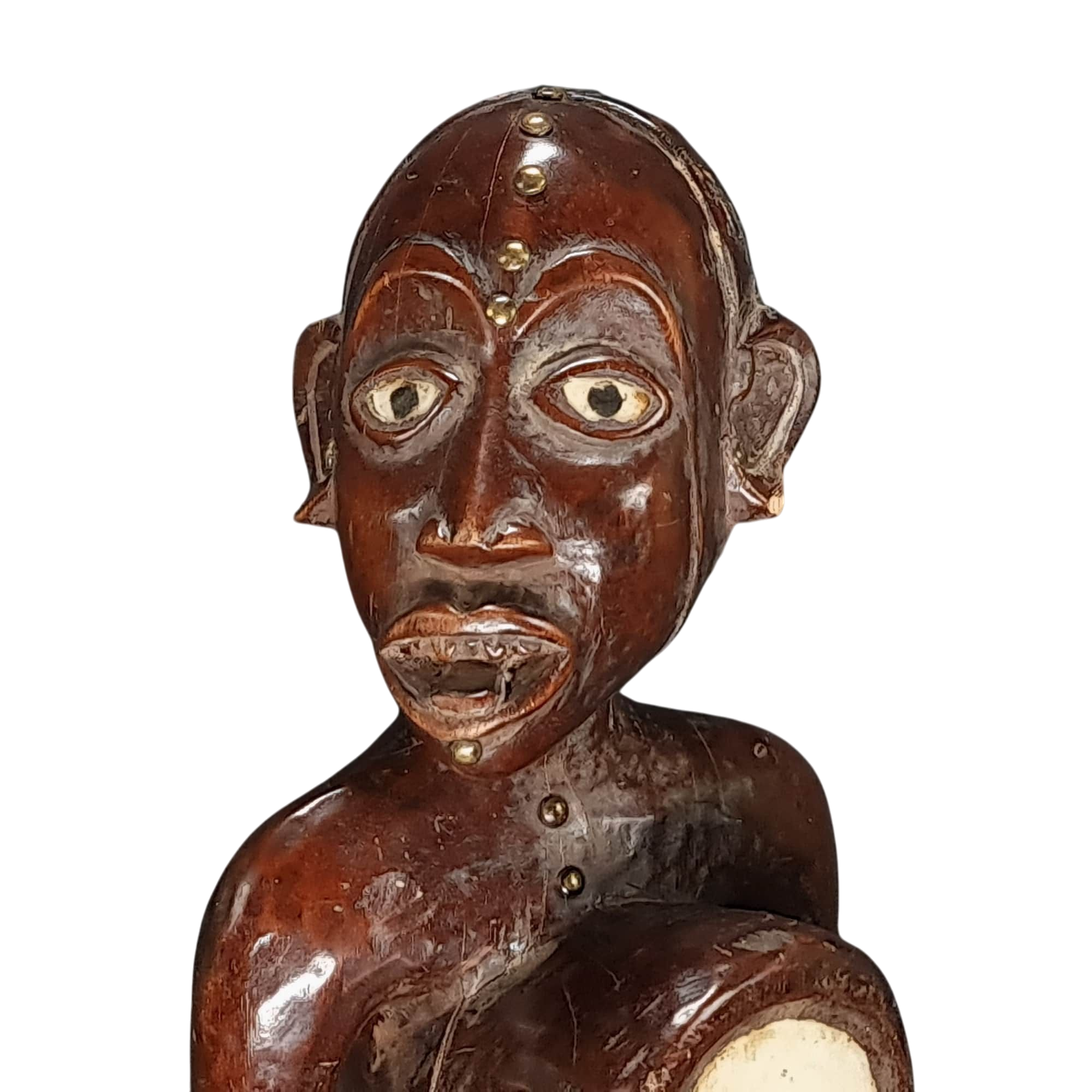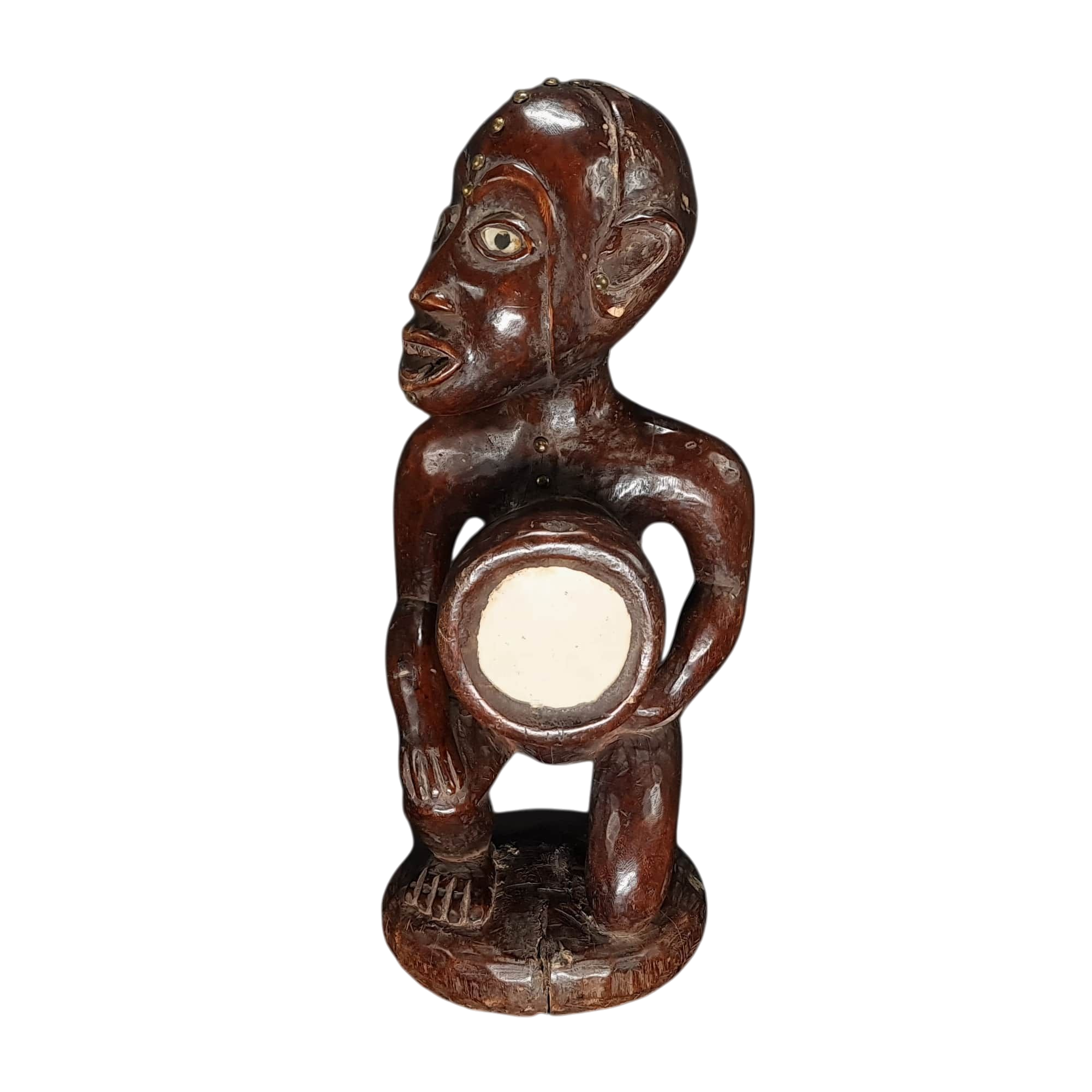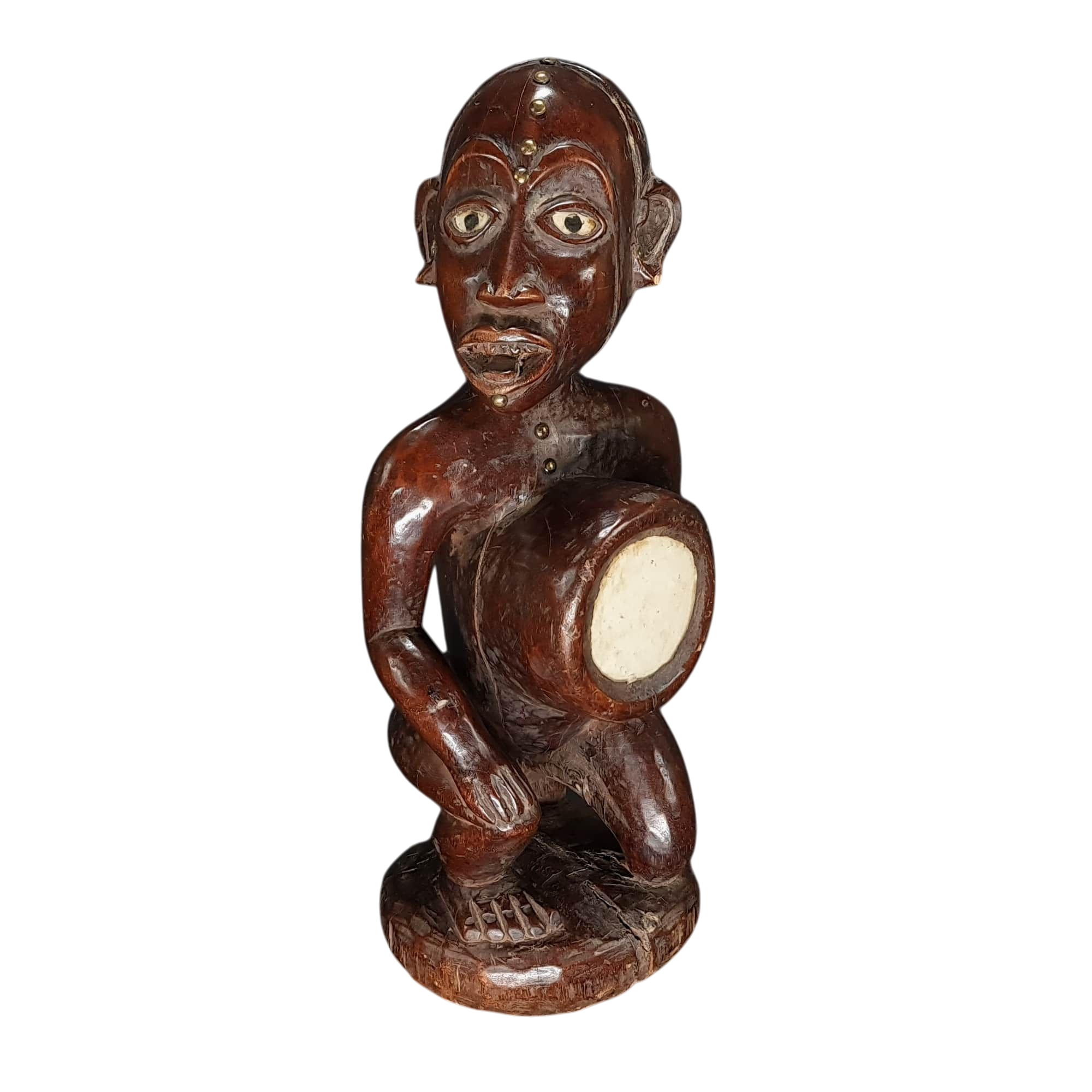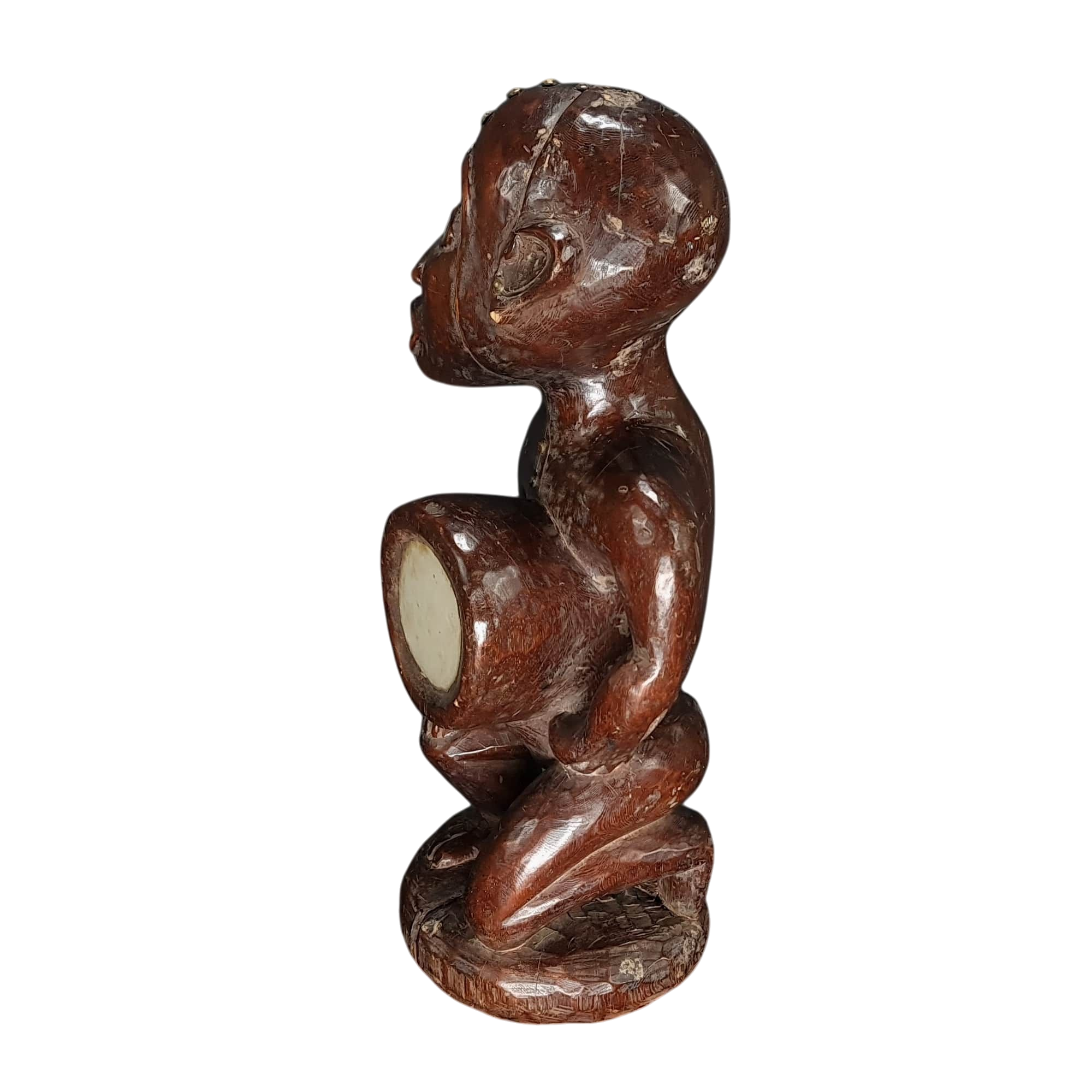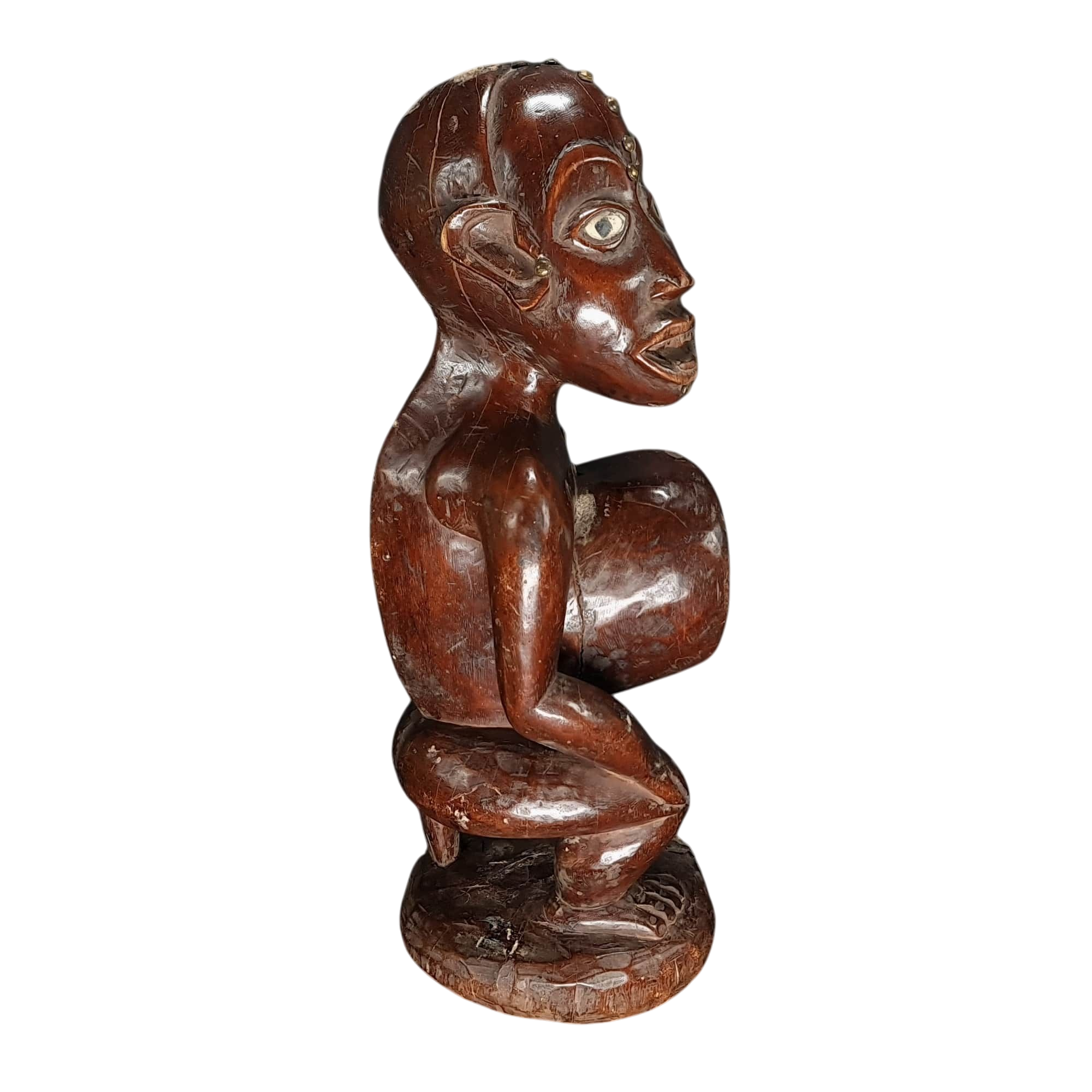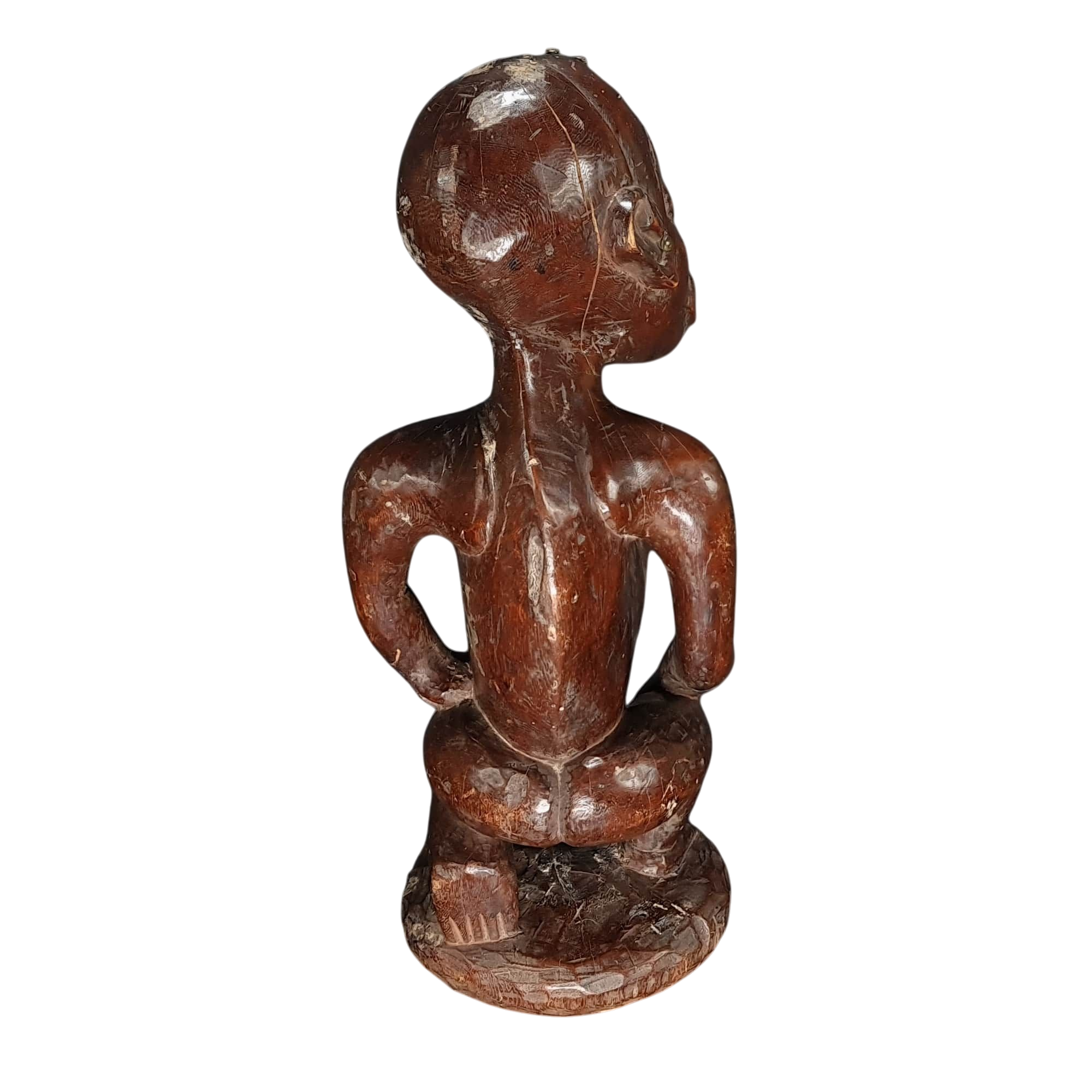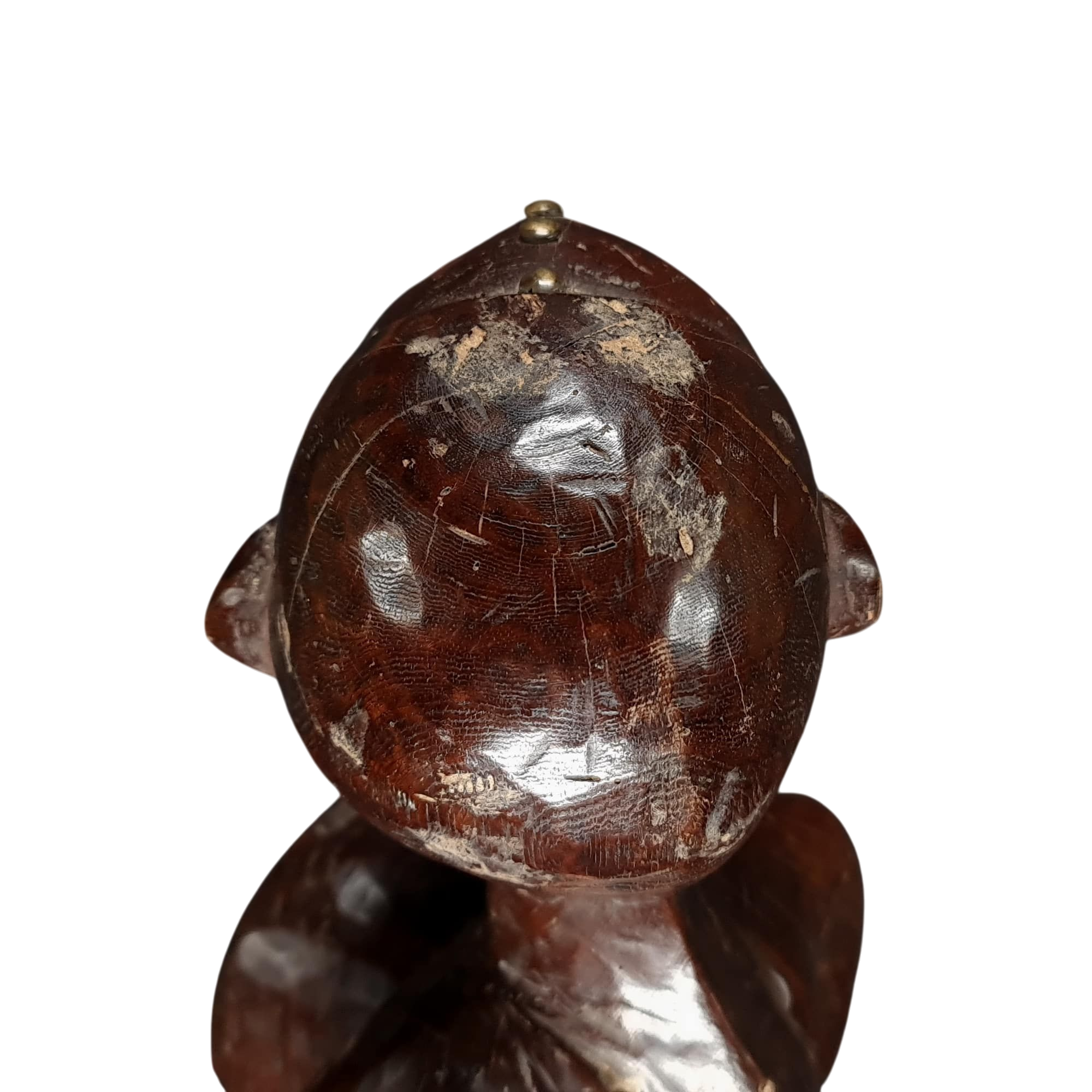Dimensions and Weight:
Weight: 3.312 kg / 3.570 kg
Height: 49.5 cm / 52.5 cm
Width: 21 cm / 20 cm
Cultural Context
Function: Bakongo statues, often referred to as "Nkisi" or "Nkondi" (singular: "Nkisi nkondi"), are power objects used by healers and priests to protect the community, heal illnesses, and punish wrongdoers.
Ritual Use: These figures are activated through specific rituals that often involve prayers, incantations, and the insertion of nails or blades into the statue to invoke spirits.
Artistic Characteristics
Aesthetic: This Bakongo statuette features expressive, stylized traits, with large white glass eyes and an open mouth, symbolizing vigilance and the ability to communicate with the spirit world.
Posture: The statue's dynamic posture indicates its active role in rituals or dance.
Materials: They are typically carved from wood and may be inlaid with various materials such as metal, shells, glass, or mirrors to enhance their spiritual power.
Symbolism
Protection and Justice: "Nkisi nkondi" are often used to ensure justice and protect the community from witches and evil spirits. The nails or sharp objects inserted into the statue symbolize commitment, agreements, or oaths.
Communication with Spirits: The statues are considered intermediaries between the living and the spirit world, capable of conveying messages and channeling supernatural forces.
Care and Respect
Veneration: Like Baoulé statuettes, Bakongo figures are maintained with care and respect. They are regularly cleaned and may be anointed with sacred substances to preserve their power.
Bakongo statuettes are complex and powerful objects, integrating both art and spirituality. They play a crucial role in the culture and beliefs of the Bakongo people, representing a deep connection to the spiritual world and ongoing protection for the community.
Provenance
Private collection ZAMBELLI/BRUGNACCHI, assembled between 1990 and 2023.
Transferred to the Spirit Land of Africa Gallery in 2023.
800.00 €
